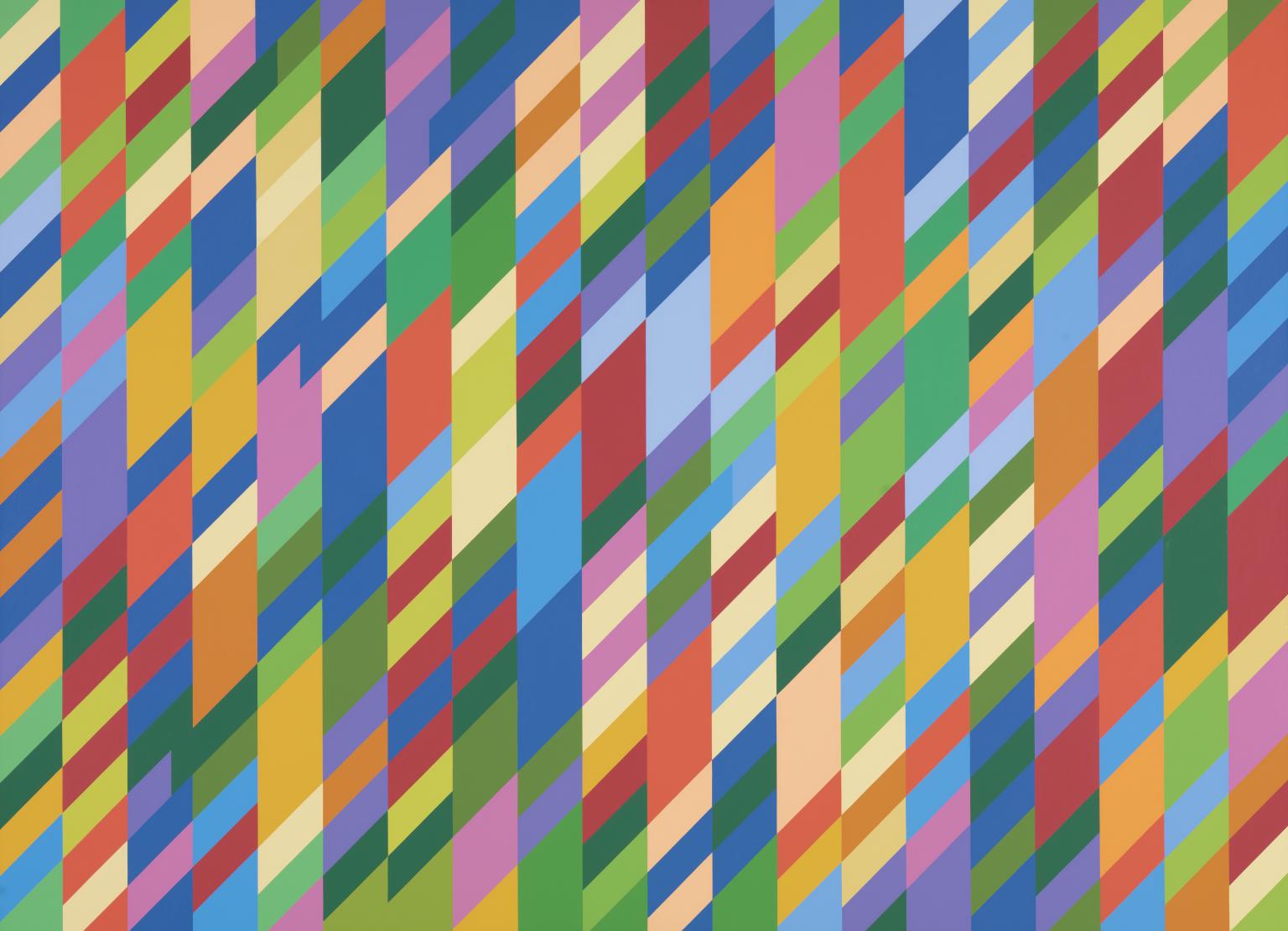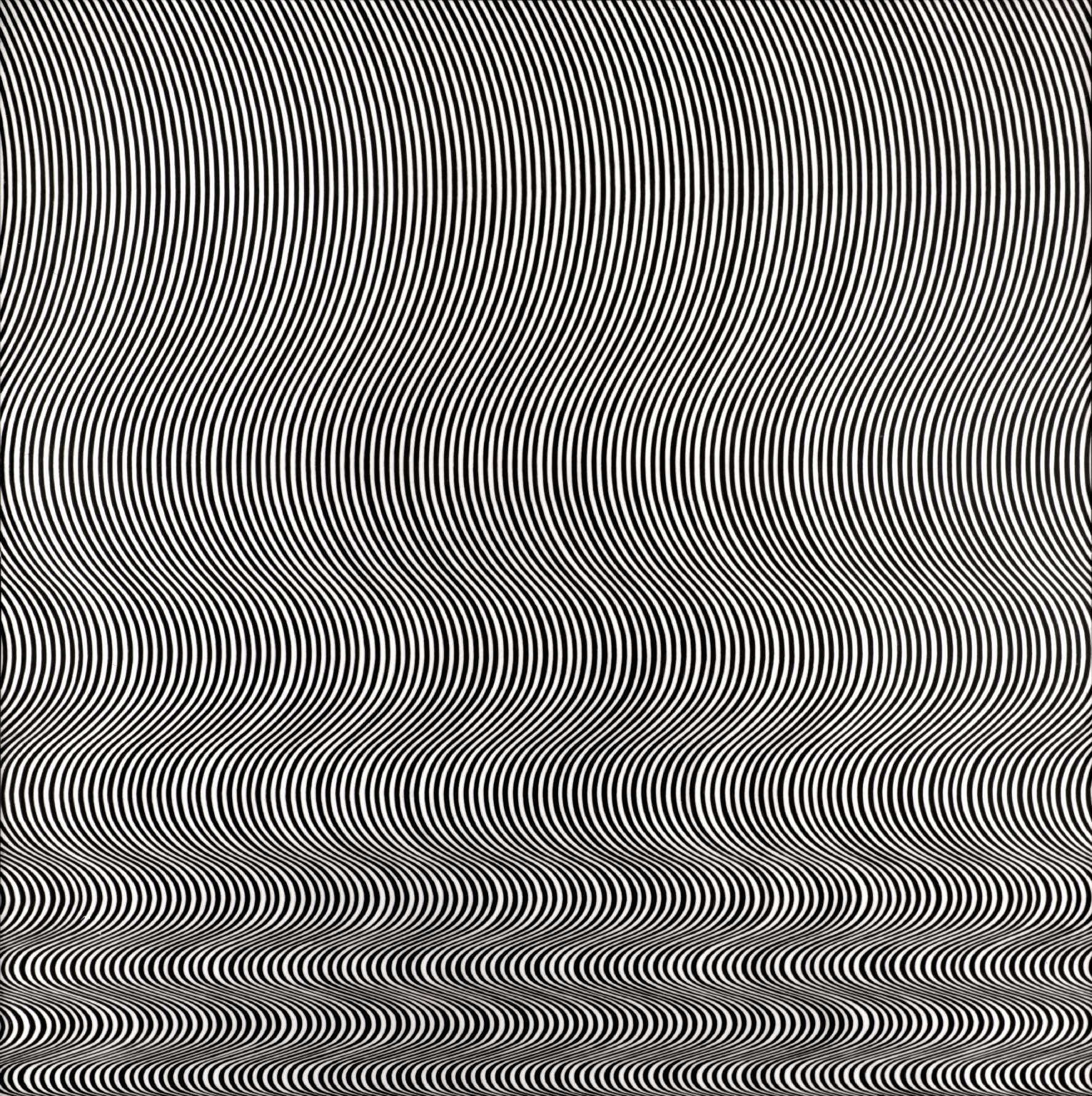Bridget Riley is a prominent op-art artist. Op-art or ‘optical art’ put together shapes, colors, and patterns to create a moving or blurring effect. In the 1960s, she developed an op-art style that explores the illusion effect of the picture on the viewer’s eye.

Nataraja 1993, by Bridget Riley. Tate. © Bridget Riley 2018. All rights reserved. https://www.tate.org.uk/
Nataraja (1993) is one of Riley’s famous works. It consists of vertical and diagonal rectangles in various bright colors. This image is dynamic and vibrant, like rhythm of a dance. Nataraja was created based on Riley’s trip to India. In Sanskrit, Naṭarāja is a form of Hindu god Shiva as the cosmic dancer.

Fall 1963, by Bridget Riley. Tate. © Bridget Riley 2020. All rights reserved. https://www.tate.org.uk/
In the 1960s, Riley’s first op-art exhibition shows black and white abstract paintings that produce an optical illusion. For example, in Fall 1963. It seems that the lines are flowing, like waves. Another work is Hesitate 1964, which depicts black dots in the white background that create a curved illusion.
Hesitate 1964, by Bridget Riley. Tate. © Bridget Riley 2020. All rights reserved. https://www.tate.org.uk/
Riley’s works also produce an ‘optical unconscious’ that deconstructs our spatial perception. It reveals how we imagine a three-dimensional object from a two-dimensional picture. ‘Optical unconscious’ is a term that is used by Walter Benjamin to describe the ability of photography to reveal what cannot be seen by the naked eye, through its slow motion devices and enlargement.
As a celebration of Riley’s 90th birthday this year, The Lightbox gallery will set to run the “Pleasures of Sight” exhibition. This exhibition will display Riley’s selection of works from the 1960s to the present day. Currently, The Lightbox is closed due to the restriction on visitor attractions, but the new dates for this exhibition will release soon. Keep an eye on their website: https://www.thelightbox.org.uk/
Bridget Riley. https://www.wikiart.org/en/bridget-riley
